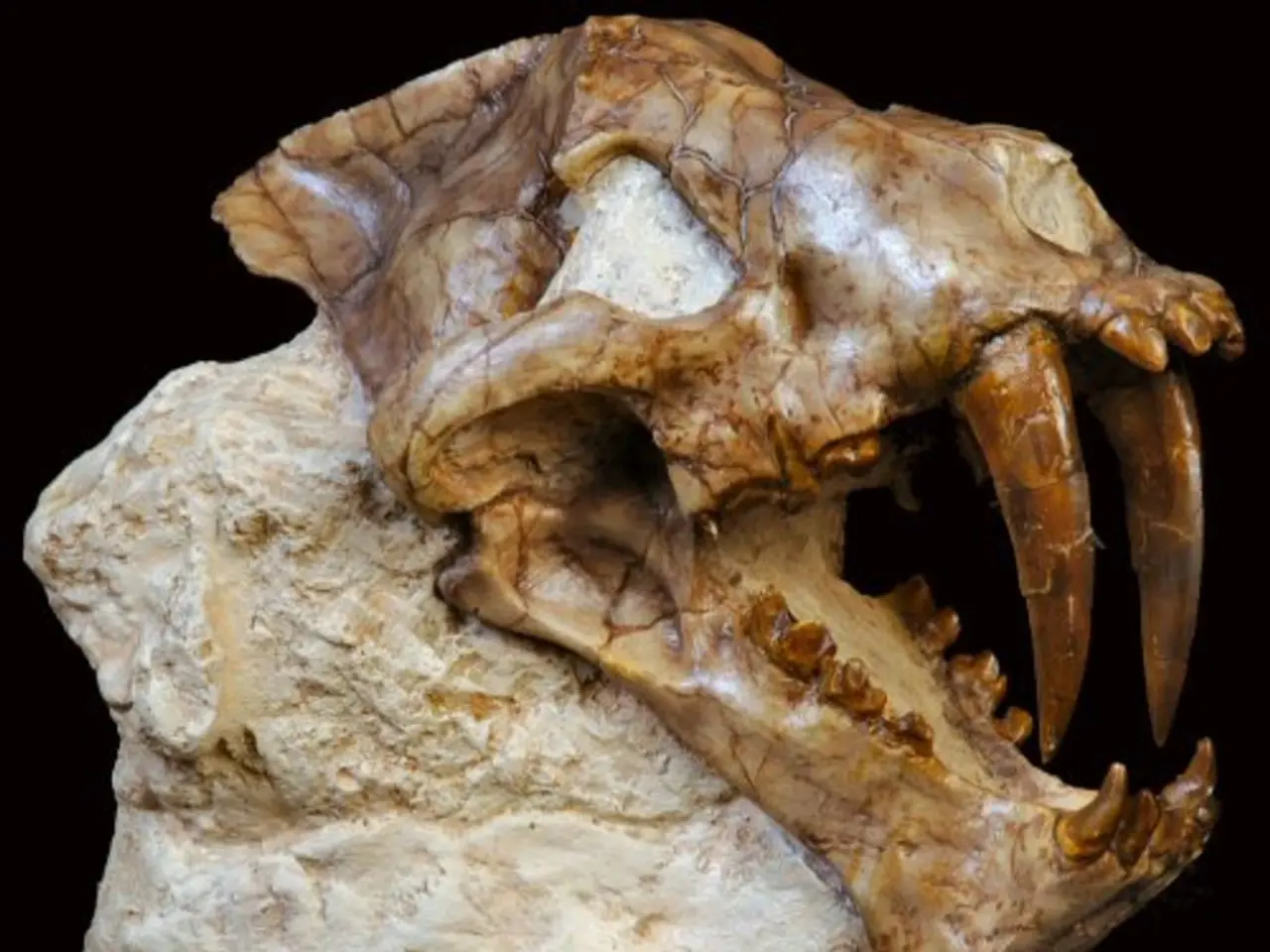Archaeologists unearth an old, armored fish skeleton in Manitoba, a revolutionary find in the field of paleontology.
In the rich fossil history of Manitoba, Canada, a significant discovery has been made that adds to our understanding of early vertebrate evolution. A new armoured fish named Elmosteus lundarensis has been uncovered, offering insights into the development of jaws and teeth.
The Elmosteus lundarensis, a member of the placoderm family, is one of the earliest known jawed vertebrates. These fish are characterized by dermal bone armour around their heads, acting as a formidable defence mechanism. Placoderms were dominant predators for about 60 million years before becoming extinct, and their evolution played a crucial role in understanding the evolution of jawed vertebrates.
The discovery of Elmosteus lundarensis was reported by Alex Karpa on our website. The fossil was found in quarries along the east side of Lake Manitoba, specifically in the Elm Point Formation, near the town of Lundar. The fossil dates back to approximately 390 million years ago during the mid-Devonian era.
Dr. Melina Jobbins, a postdoctoral fellow at the University of Manitoba, helped lead the team that discovered Elmosteus lundarensis. She considers it one of her top three career discoveries. The fish is known for its dermal bony armour covering its head and thorax, while the rest of its skeleton is largely cartilaginous, similar to modern sharks.
The discovery of Elmosteus lundarensis contributes significantly to understanding the evolution of jaws and teeth. It is also a notable find for Manitoba, showcasing the province's rich fossil history beyond dinosaurs. Dr. Kirstin Brink, an associate professor of paleontology at the University of Manitoba, finds the discovery of new fossils interesting.
The mid-Devonian era in Manitoba was marked by limited knowledge about fish species until the discovery of Elmosteus lundarensis. This find highlights the potential for discovering more placoderm species in the region, contributing to a broader understanding of the evolutionary history of fish in Manitoba. Dr. Jobbins believes there will be more discoveries of similar fish in Manitoba in the future.
Manitoba's rock structures are suitable for preserving fossils, often resulting from mining activities. The Elmosteus lundarensis fossil is on display at the Geological Sciences Museum at the University of Manitoba. The finding can help researchers understand what lived in the waters that once covered Manitoba during the mid-Devonian era.
The discovery of Elmosteus lundarensis can aid in doing ecological analyses to understand the diversity of life during that time. This newfound knowledge can help us learn more about the evolution of fish and our ancestors. With more discoveries like this, we continue to uncover the mysteries of our planet's past.
- The discovery of the Elmosteus lundarensis, a member of the placoderm family, offers insights not only into early vertebrate evolution but also into the development of jaws and teeth, making it valuable data for researchers in environmental-science and paleontology.
- In the realm of technology and space-and-astronomy, the recent find could potentially inspire new scientific breakthroughs, as understanding the evolution of early vertebrates like the Elmosteus lundarensis may provide clues about the genetic and biological foundations that have shaped modern life on Earth and possibly beyond.



